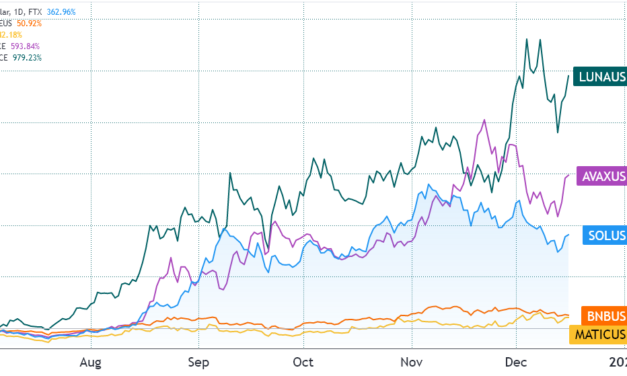New to crypto trading? Here are 5 tips on how to start 2022 on the right foot
It doesn’t matter how experienced you are at trading because nothing can be done to protect a person against the might of cryptocurrencies’ price swings. Currently, Bitcoin’s (BTC) volatility, the standard measure for daily fluctuations, stands at 64% annualized. As a comparison, the same metric for the S&P 500 stands at 17%, while the volatility spec for WTI crude oil is at 54%.However, it is possible to avoid the psychological impact of an unexpected 25% intraday price swing by following five basic rules. Fortunately, these tactics do not require advanced tools or large sums of money to hold through periods of high volatility.Plan to refrain from withdrawing money in less than 2 yearsLet’s assume that you’ve got $5,000 to invest, but there’s a good possibility that you might need at least $2,000 of that amount within 12 months for travel or car maintenance or some other task.The worst thing you can do is do a 100% allocation in crypto because you might need to sell your position at the worst time ever, maybe at a cycle bottom. Even if one plans to use the proceeds in decentralized finance (DeFi) pools, there’s always the risk of impairment losses or hacks that compromise access to the funds.In short, any funds allocated to cryptocurrencies should have a two-year vesting period.Always dollar cost averageEven professional traders get swept away by the fear of missing out (FOMO), ceding to an urgency to build a position as quickly as possible. But, if everyone is getting 50% and higher returns consistently and even meme coins are posting stellar returns, how can you stand aside and merely watch?The DCA strategy consists of buying the same dollar amount every week or month, regardless of the market’s movements; for example, buying $200 every Monday afternoon for a year removes the anxiety and pressure caused by the constant need to decide whether to add a position.Avoid buying all the positions in less than three or four weeks at all costs. Remember, the crypto adoption rate is still in its infancy.Don’t use too many indicators when conducting analysisThere are countless technical indicators, including the moving average, Fibonacci retracement levels, Bollinger Bands, the directional movement index, the Ichimoku Cloud, the parabolic SAR, the relative strength index and more. If you consider that each one has multiple setups, there are endless possibilities for tracking these indicators.The best traders are experienced enough to know that reading the market correctly is more important than picking the best indicator. Some prefer to track correlations to traditional markets, while others focus exclusively on crypto price charts. There’s no right and wrong here, except for trying to track five different indicators simultaneously.Markets are dynamic, and in crypto, that is especially true considering how fast things change. Learn when to step asideEventually, you will read the market incorrectly while finding bottoms or altcoin seasons. Every trader gets it wrong sometimes and there’s no need to compensate by immediately increasing the bet size to recoup the losses. That is precisely the opposite of what one should be doing.Whenever you catch a “bad break,” step aside for a couple of days. The psychological impact of losses is a heavy burden and will negatively impact your capacity to think clearly. Even if a clear opportunity arises, let that one slide. Go for a walk, or try to organize your life aside from trading.Truly successful traders are not the most gifted, but those who survive the longest.Continue to invest in winnersThis might be the hardest lesson of them all because investors have a natural tendency to take profit on our winning positions. As discussed previously, crypto market volatility is extremely high, so aiming for a 30% gain will not cover your previous (or future) losses.Instead of selling winners, traders should be buying more of those. Of course, one should not neglect the market data or the overall sentiment but if your expectations remain bullish, then consider adding to the position until the overall market signals some form of weakness.One will eventually catch a 300% or 500% gain by being brave and holding on to the most profitable positions. These are the returns you expected when entering such a risky market, so don’t be afraid when they pop up.Every rule is meant to be brokenIf a roadmap to cryptocurrency trading success existed, many people would have found it after many years and the returns would quickly fade. That is why you should always be ready to break your own rules every once in a while.Do not follow investment advice from influencers or experienced money managers blindly. Everyone has their own risk appetite and capacity to add positions after an unexpected setback. But, more importantly, make sure to take care of yourself along the way!The views and opinions expressed here are solely those of the author and do not necessarily reflect the views of Cointelegraph. Every investment and trading move involves risk. You should conduct your own research when making a decision.
Čítaj viac






